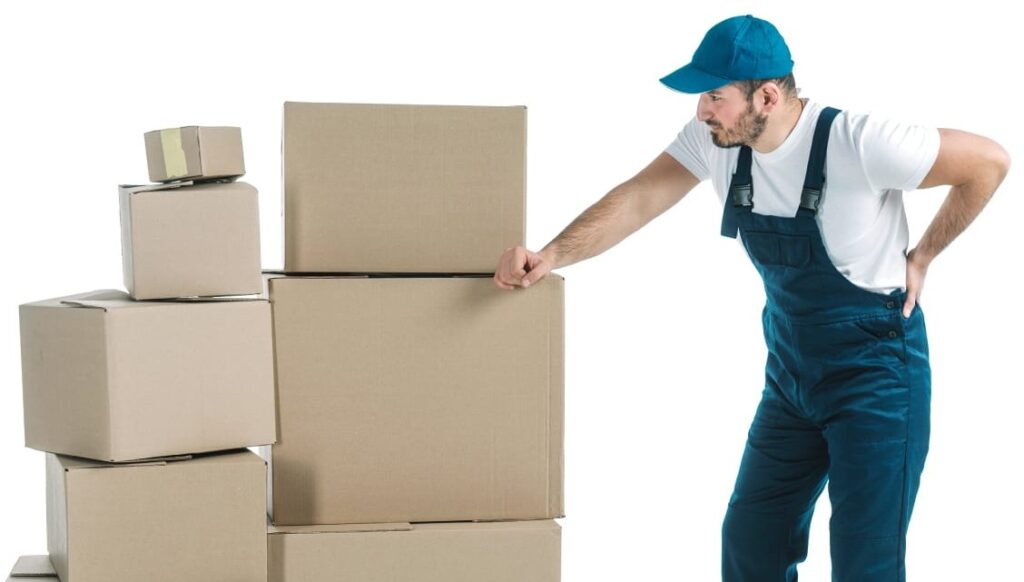
What’s the Heaviest a Moving Box Should Weigh?
Packing up and moving out can be a challenge. Imagine you’re carefully carrying a box of your china, and suddenly, the box tears. All your beautiful plates shatter on the floor. Frustrating, right?
During a move, selecting appropriate packing boxes and making sure their weight isn’t too substantial is crucial.
Got more stuff than your boxes can handle? Overpacking can lead to messy mid-move accidents or leave you nursing a bad back.
Let’s figure out the perfect balance, shall we?
The Role of Cardboard Packing Boxes in a Move
The humble cardboard box is the true hero in all this. Those embarking on a moving journey appreciate them because they are robust, lightweight, and reasonably priced.
Still, your choice of box and packing technique will either greatly enhance or ruin the moving process.
Each of the several-sized and strong cardboard boxes serves a specific use. For heavy objects like books, for example, compact boxes are ideal. Larger ones should be saved for lighter, bulkier items like bedding or cushions.
So, understanding how to use your boxes effectively helps prevent damage to your belongings.
What’s the Ideal Weight for a Moving Box?
Usually speaking, no crate should weigh less than fifty pounds (around 22 kg).
Most people can handle this weight, hence it won’t strain your back too much or run the danger of ruining the contents. However, it still depends on your circumstances.
For instance, if you are moving alone or with little aid, you should aim for a weight limit, say between 30-35 pounds (13-16 kg).
Let us examine this further. Small boxes, typically ranging from 1.5 to 3 cubic feet, are excellent for heavier items like books, canned goods, or equipment. These boxes should ideally weigh between thirty and thirty-five pounds.
Medium boxes, typically measuring 3 to 5 cubic feet, are often used for kitchen tools, small appliances, and décor. Aim to keep their weight under forty pounds for easier handling.
Save lightweight objects like beds, pillows, or coats for large boxes, which are typically over five cubic feet. In this case, strive to keep the weight under fifty pounds. That’s about it, probably.
Factors to Consider When Packing Your Boxes
A few things affect how much you should stuff your cardboard boxes. Every one of these features guarantees effective, safe packing and protection of your goods.
Box Durability
It’s great to get the right kind of cardboard box that will suit your needs. Note how a double-walled box is stronger and can carry more weight compared to a single-walled box.
It’s key to get good quality cardboard boxes, no matter the size or delicacy of your stuff. Even though these tough boxes can usually carry as much as 80 pounds, don’t max out their capacity!
To make carrying and moving easier, try keeping the weight down to 50 pounds.
Item Fragility
When packing delicate goods, you should consider not just the weight, but also its distribution.
Books are heavy items, but you can pack them in the same box as more fragile items like glassware. Lay lighter, delicate bits on top of heavier objects towards the bottom. In this sense, you maximise space without endangering your possessions.
Distribution of Weight
Balanced boxes not only simplify the process of lifting and transporting, but also reduce the risk of injury and potential damage to what is inside.
Generally speaking, always distribute the weight equally across the bottom of the box and counter it with smaller objects on top. More on that, overstacking or cramming too much on one side also increases the likelihood of the box breaking.
What Happens When You Overpack a Box?
Though it would be tempting to put as much as possible into every box to cut the number of trips, overpacking is a surefire way to ruin things.
Cardboard packing boxes have a weight restriction for a purpose. Over that limit, your things run the danger of shattering even with sturdy crates. Fragile objects are particularly vulnerable, even the sturdiest boxes can buckle under excessive weight.
Furthermore, extra hefty boxes could be risky to load and transport. Do you want to start your new life in a new house with a pulled muscle or sore back?
Overstuffing can cause the sides to rip or the bottom to collapse. The last thing you want is to rush to pick up your possessions from the pavement mid-moving.
How to Avoid Overpacking Your Cardboard Packing Boxes
A good, stress-free move depends on packing cleverly. Though it’s easy to get carried away, following these basic guidelines will help you stay clear of overpacking’s dangers.
- Choose your boxes based on functionality rather than just what’s on offer;
- Try not to combine too delicate and heavy objects;
- Test before sealing. Lift a box to make sure it is manageable before you wrap it;
- Sort your boxes by labels. Although this advice won’t help with the weight, your moversneed to manage bigger boxes carefully.
The Importance of Professional Help
Sometimes, even the best packing techniques call for additional helping hands. When you’re faced with the task of moving numerous heavy boxes, getting experts on board could be a real game-changer.
They possess not only knowledge, but also the means to ensure effective and safe movement of your shipments.
Professional packers can offer valuable guidance if you’re uncertain about the right type of cardboard packing boxes to use. They can even handle the packing for you, especially when it comes to specific items.
It could strain your budget initially, but you’ll avoid a lot of hassle and unnecessary stress in the long run.
Conclusion
When it comes to packing, it’s all about finding that sweet spot between keeping your boxes light enough to lift and strong enough to hold your stuff.
So, save yourself the hassle by sticking to the weight guidelines and organising your items carefully.
If you’re not sure where to start, there’s no shame in getting a little help. A service that delivers top-notch packing materials can make all the difference.
It’s a simple step to avoid chaos on moving day, and let’s face it, your sanity is worth every penny.
